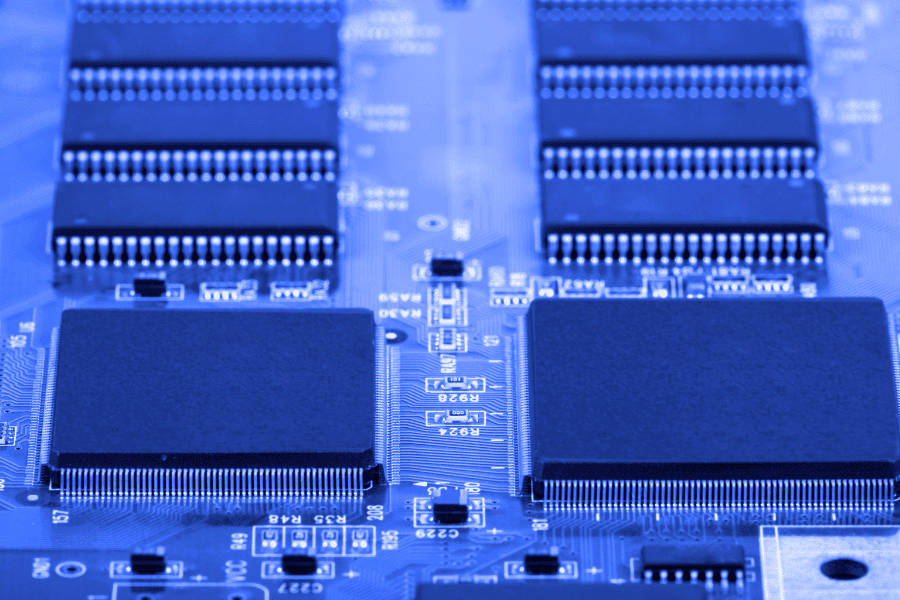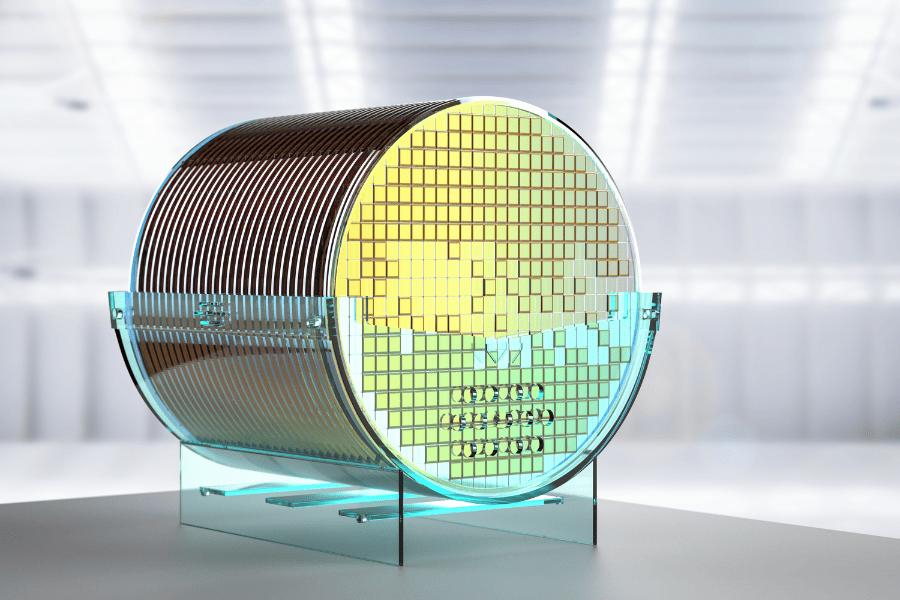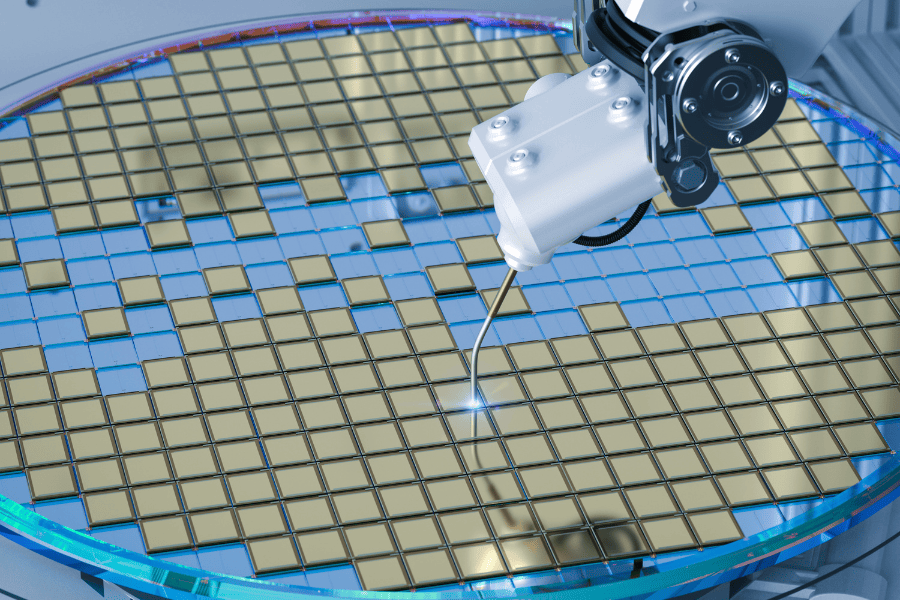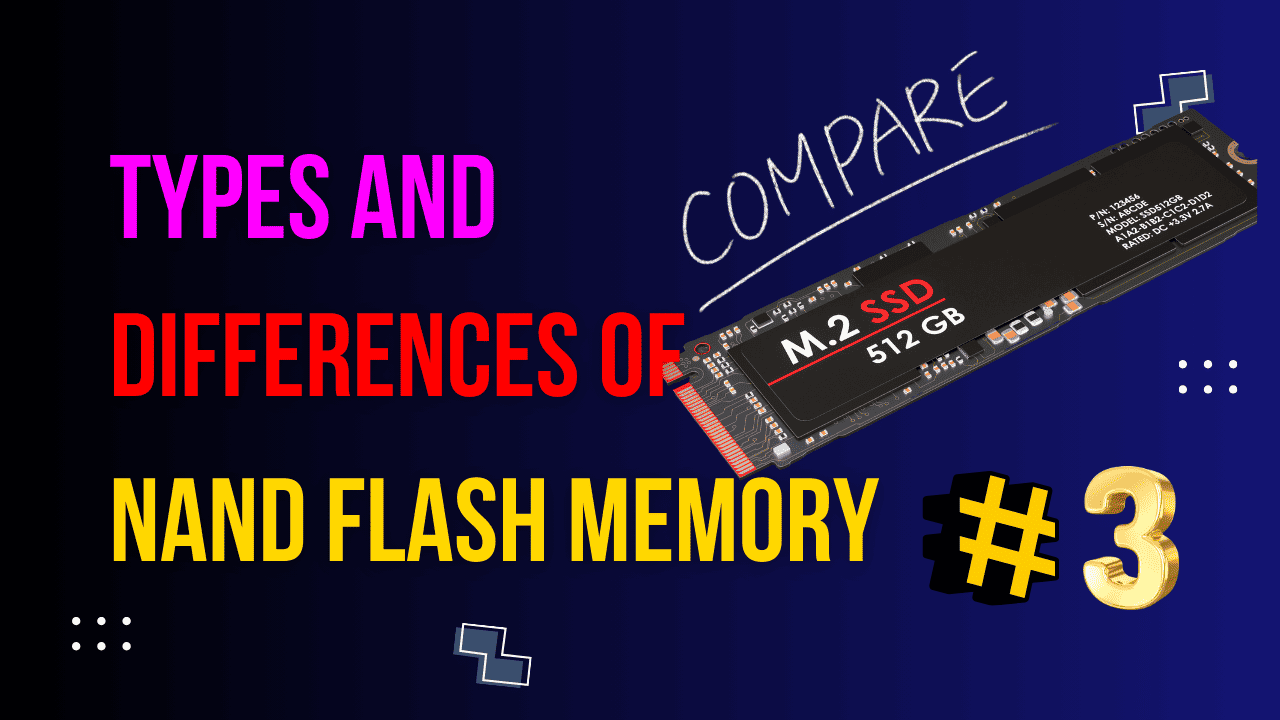Table of Contents
SLC, MLC, and TLC NAND Flash Memory Side by Side

When picking the right type of NAND flash memory for a job, you need to think about a lot of things, such as speed, durability, and cost. The main goal of this comparison is to show the important differences between SLC, MLC, and TLC NAND flash memory so that you can make an informed choice based on your needs.
Comparison of Performance
- SLC is unique because it has the fastest read and write speeds. This makes it perfect for high-performance apps that need speed.
- MLC has read and write speeds that are about the same, making it good for everyday use by consumers and some business uses where average performance is fine.
- TLC has good read speeds but slower write speeds than SLC and MLC. It works well in situations where high volume and low cost are more important than top-level performance.
Strength and Dependability
- With up to 100,000 write cycles per cell, SLC NAND flash memory has the most endurance, making it the most effective for settings with a lot of writing.
- Most of the time, MLC NAND can handle between 3,000 and 10,000 write cycles, which is a good balance between cost and reliability.
- With between 500 and 3,000 write cycles per cell, TLC NAND has the lowest durability. This could make it less useful for apps that need to write data often over a long period of time.
Efficient use of money
- SLC storage costs the most per gigabyte because it has a low data density but great speed and durability.
- In terms of price, MLC is in the middle. It offers a mix between speed, durability, and storage space.
- TLC has the lowest price per gigabyte, which makes it the best choice for mass storage options that need to have a lot of space at a low cost.
This review shows that the needs of the application should determine which of SLC, MLC, and TLC NAND flash memory to use, taking into account things like speed, reliability, and cost-effectiveness. Users and makers can choose the best type of NAND flash memory for their storing needs by understanding these differences. This ensures the best performance and value.
What’s Next for NAND Flash Memory

As we look to the future, we can see that NAND flash memory will continue to change and improve. This part will talk about new technologies in the NAND flash ecosystem, trends that will affect storage options in the future, and what these changes could mean for businesses and customers.
New Technologies (PLC and QLC)
- Quadruple-Level Cell (QLC): QLC NAND saves four bits of data per cell, which makes storage even denser and lowers the cost per gigabyte. Even though QLC has even more storage space, it has problems with write speed and longevity, so it needs more advanced methods for fixing errors and evening out wear.
- Penta-Level Cell (PLC): When we look even further into the future, Penta-Level Cell (PLC) technology, which tries to store five bits of data per cell, is the next big thing in NAND flash memory. Even though it is still in the research and development stages, PLC offers storage capacities that have never been seen before, though they will be harder to keep up in terms of speed and dependability.
Trends in Storage Solutions
More people want high-capacity storage: From consumer content to business data analytics, the amount of data being created is growing at an exponential rate. This means that more and more people need high-capacity, low-cost storage options. NAND flash memory, especially TLC and QLC, is the best way to meet this need.
Improvements to the NAND Flash architecture: New technologies like 3D NAND, which stacks memory cells vertically, have greatly increased the amount of data that can be stored while also reducing some of the speed and durability issues that come with using more dense cells.
Pay attention to Durability and Data Integrity: As NAND flash memory technologies improve, so do the ways to keep data safe and make storage devices last longer. This includes mistake correction techniques and wear-leveling schemes that are smarter.
In the future of NAND flash memory, there will be a constant push for bigger store densities, better speed, and lower costs. These improvements mean that NAND flash will continue to be a key part of storage options in a wide range of settings, from personal computers to large business data centers. This will help it keep up with the changing needs of the digital age.
Conclusion

The in-depth look at NAND flash memory, covering everything from its basic concepts and types to the newest innovations and useful buying tips, shows how important this technology is for today’s data storing.
Key Points Summing Up
Different Kinds of NAND Flash: We looked at the different features, pros, and cons of SLC, MLC, and TLC NAND flash memory, which all have different speed, durability, and cost needs.
Changing Technology Scene: The talk about new technologies like QLC and PLC NAND flash memory shows that the business world is always trying to get more storage space and lower costs, even though this can cause problems with speed and durability.
Strategies to Think About When Making a Choice: It’s important to know your exact needs in order to choose the right NAND flash memory, taking into account things like storage space, speed standards, durability needs, and budget limits.
What NAND Flash Memory Will Do for Future Tech
NAND flash memory will continue to be a major player in the field of storage technology. The constant creation of new data and the growing need for faster, more reliable, and larger storage options mean that NAND flash memory is changing quickly to keep up with larger trends in technology and society.
Innovation and Adaptation: As new types of NAND flash memory come out, we can expect more innovations that will get around the problems we currently have by making solutions that work better, last longer, and cost less.
Adding new technologies to the mix: NAND flash memory will stay a part of many different kinds of devices and systems, from personal technology to business storage options and more. This will help AI, big data analytics, and the Internet of Things (IoT) make progress.
Last Thoughts
The research into NAND flash memory shows how important it is to the present and future of digital files. As technology improves and our needs for digital storage grow, NAND flash memory will continue to play a major role in making the next generation of devices and apps possible, pushing the limits of what can be stored and retrieved.
This guide’s goal is not only to teach, but also to give readers the tools they need to make smart choices about NAND flash memory, giving them the power to find their way around the complicated world of digital storage technologies.
Discover More
If this article made you happy and taught you something, I’m sure our next article will do the same for you. Each piece is carefully written to help you understand things better and enjoy reading more. So, to keep exploring and having fun, just click on this link to go to our next story.
Types and differences of NAND Flash Memory. Part 2 – ReViewMaster DEN (rvmden.com)
Types and differences of NAND Flash Memory. Part 1 – ReViewMaster DEN (rvmden.com)



